Four years, by any definition, is a very brief model life these days but BMW is one of those carmakers that worries less about model rotation and more about being on the money, as far as each of its cars is concerned. Longer, lower and wider is a specification that somehow suits the punchiness of the thoroughly-revised BMW X4. Naturally, its customers will appreciate the redevelopment of the X4, not least because it is also sleeker and still competitively priced against its class rivals.
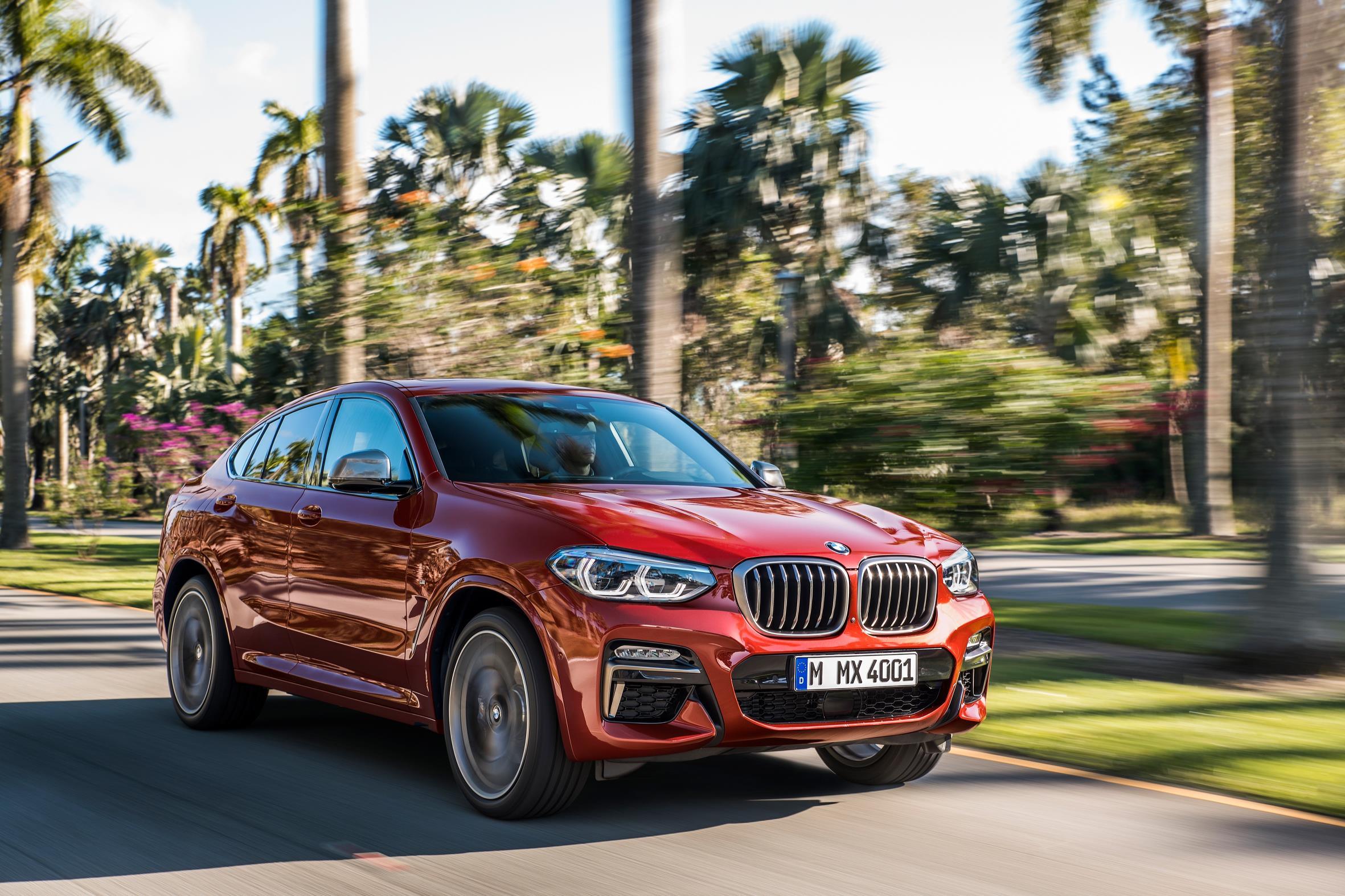
The class is an intriguing one. While the segment grew substantially by around 26% in 2016, it only managed a 15.4% expansion in 2017, according to recent figures from JATO, the motor industry statisticians. It is one populated by every German car brand, as well as Lexus, Alfa Romeo and Jaguar. Keen pricing is a major criterion and BMW has pitched the X4 strongly against its main competitors, helped in no small part by dramatic changes to the interior, as well as the bodywork.
Due to economies of scale, the X4 shares its interior with the more upright X3, which was also revised only a couple of months ago. However, as a car with sportier intentions, its front seats are more bolstered and provide a superb driving position that is fortunately a common BMW trait, being both comfortable and exceptionally supportive. Occupant satisfaction is very much a precursor with the X4.

The abiding memory of the X4’s interior lies with its high-quality dashboard moulding, topped by durable hide, which was carried into the seats and door cards of the test example. The customary BMW instrument layout provides a high level of clarity, with visually pleasing details that have always been a BMW tenet. While a standard, 6.5-inch information touch-screen is sited above the centre air-vents (it does not lower into the dashboard), the optional unit is 10.3-inches in screen size and can be operated by the rotary controller located adjacent to the gear selector. Voice and gesture controls are available optionally.
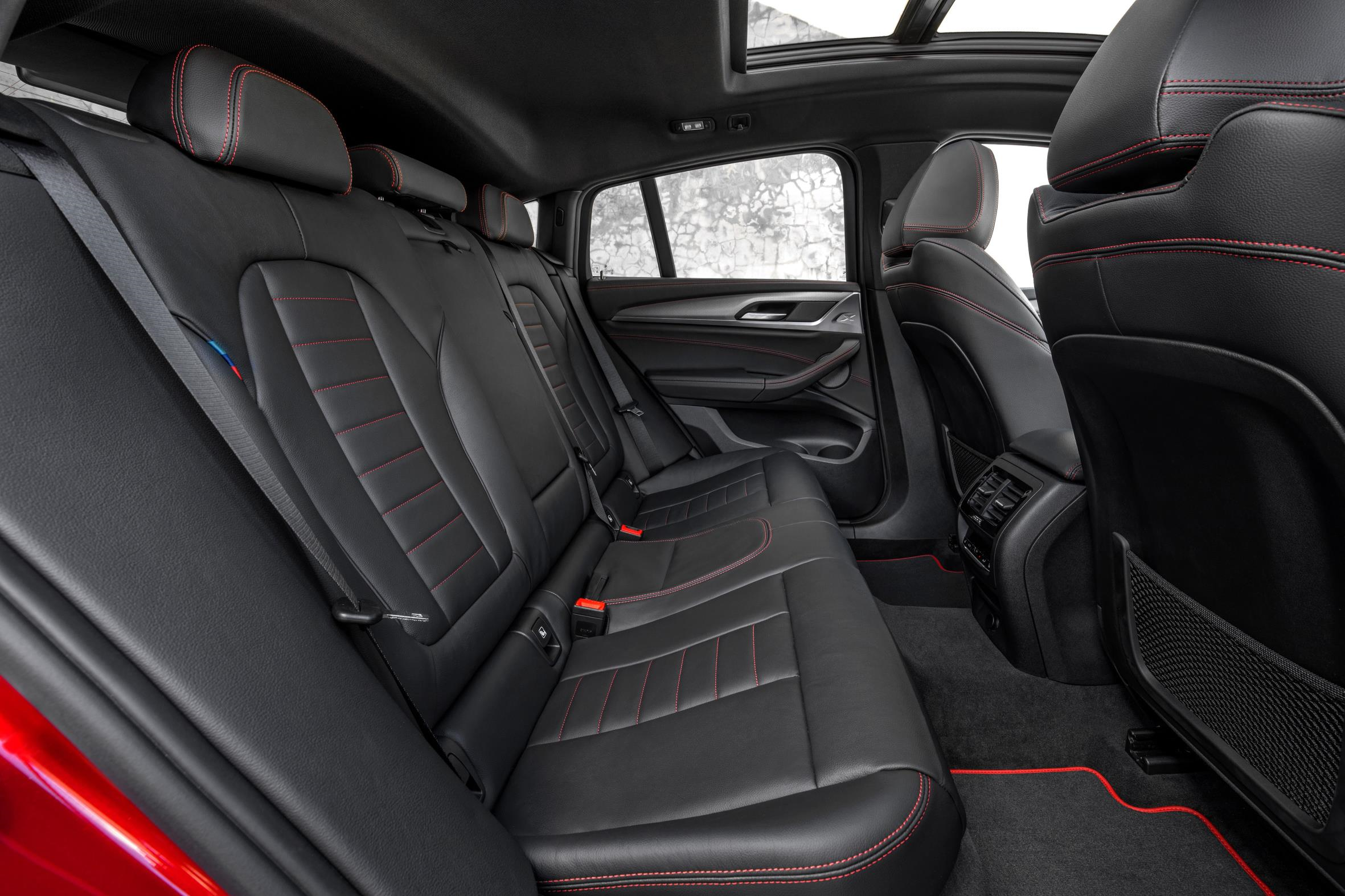
Thanks to a slightly longer wheelbase, BMW has been able to engineer a large amount of both rear legroom and boot space into the new model. For added practicality, the rear seats split 40-20-40 and accommodating longer loads in a boot of 525-litres capacity (up to 1,430-litres, with the rear seats folded forwards) is made easier by the enhanced flexibility.
Engine choice has always formed part of the BMW remit and two versions of the 2.0-litre petrol engine in 184 and 252bhp forms, as well as a pair of turbo-diesels developing 190 and 231bhp, are available from the outset. A pair of six-cylinder, 3.0-litre displacement versions will wear M-Performance badges in M40i and M40d guises (360 and 326bhp respectively). Both of the larger engines will crack the 0-60mph sprint in around 4.5s, with top speeds of 155mph. Of course, the four-cylinder engines are slightly more pedestrian (in BMW terms), although the less potent TDi can return around 52.3mpg on the Official Combined test cycle and emits 142g/km CO2. However, with list prices starting at £42,900, before applying the Motor Source Group discounts, they are all subject to higher rates of road tax for the first five years after registration, which is a point worth remembering.
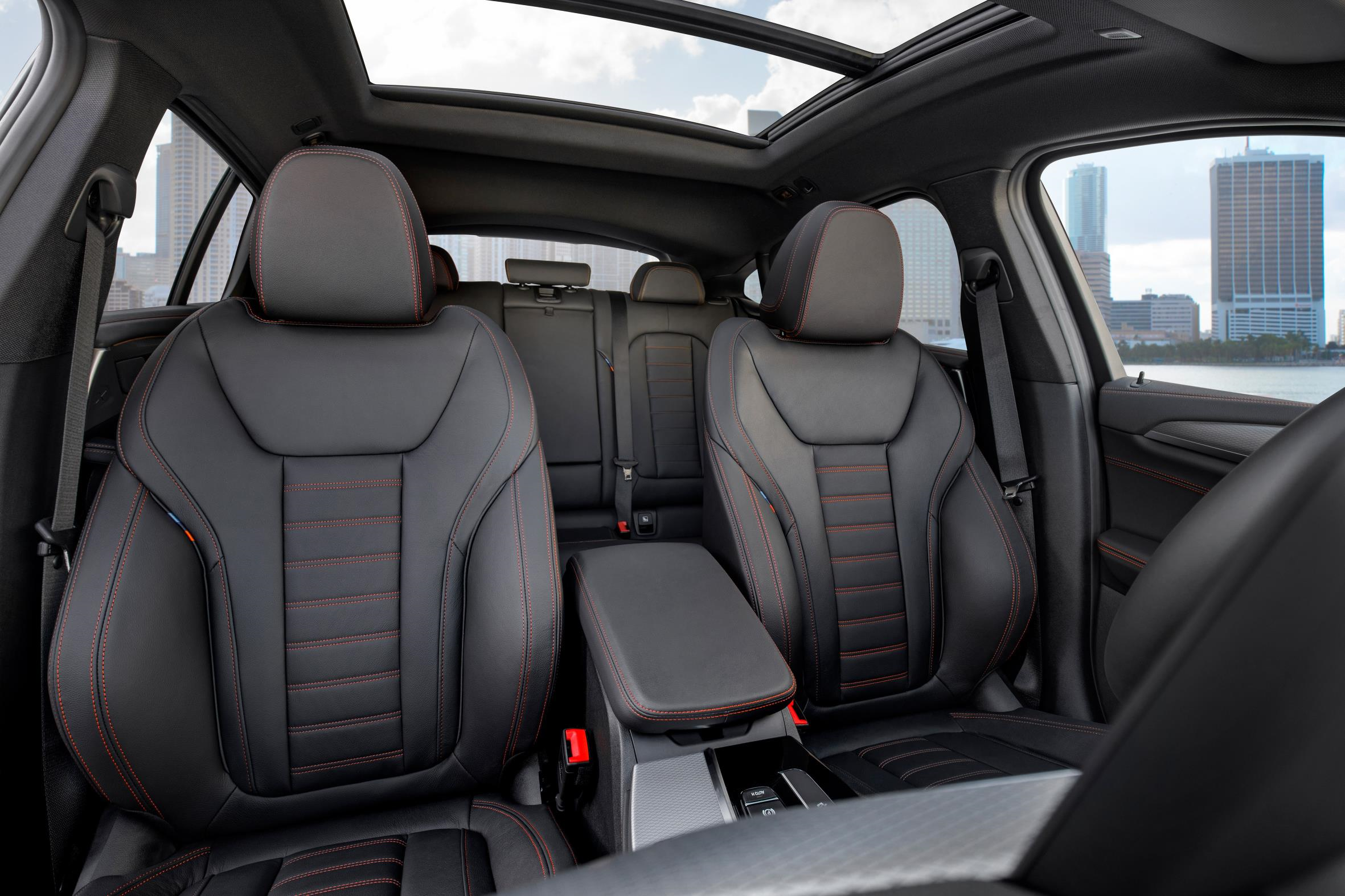
The extensive use of aluminium and high-strength steels in forming the stylish bodywork has resulted in a reduction in the car’s kerbweight (50kgs less than before), despite enlarged dimensions overall. For many years, BMW has been very careful to ensure that the majority of its cars are impeccably balanced fore and aft and the X4 is no exception, boasting a perfect 50:50 weight distribution. However, this is not an idle pursuit, as the firm’s sometime advertising tag-line highlighted BMW as the ‘Driving Machine’ and it is reflected in the X4’s impeccable on-road manners.
Driving through the latest 8-speed automatic transmission, with manual over-ride, either via the steering wheel-mounted paddles (not on the base 2.0-litre models), or by clicking the gearstick forwards and backwards, when in manual mode, which is connected to a rear-biased 4x4 system (X-Drive), the car’s driveability is outstanding. Utilising a torque vectoring system on the rear axle, there is a selectable choice of Sport, Comfort, or Eco-Pro driving modes (the higher-specification versions also feature a Sport-Plus mode) that maximise the dynamic handling strengths of the car.
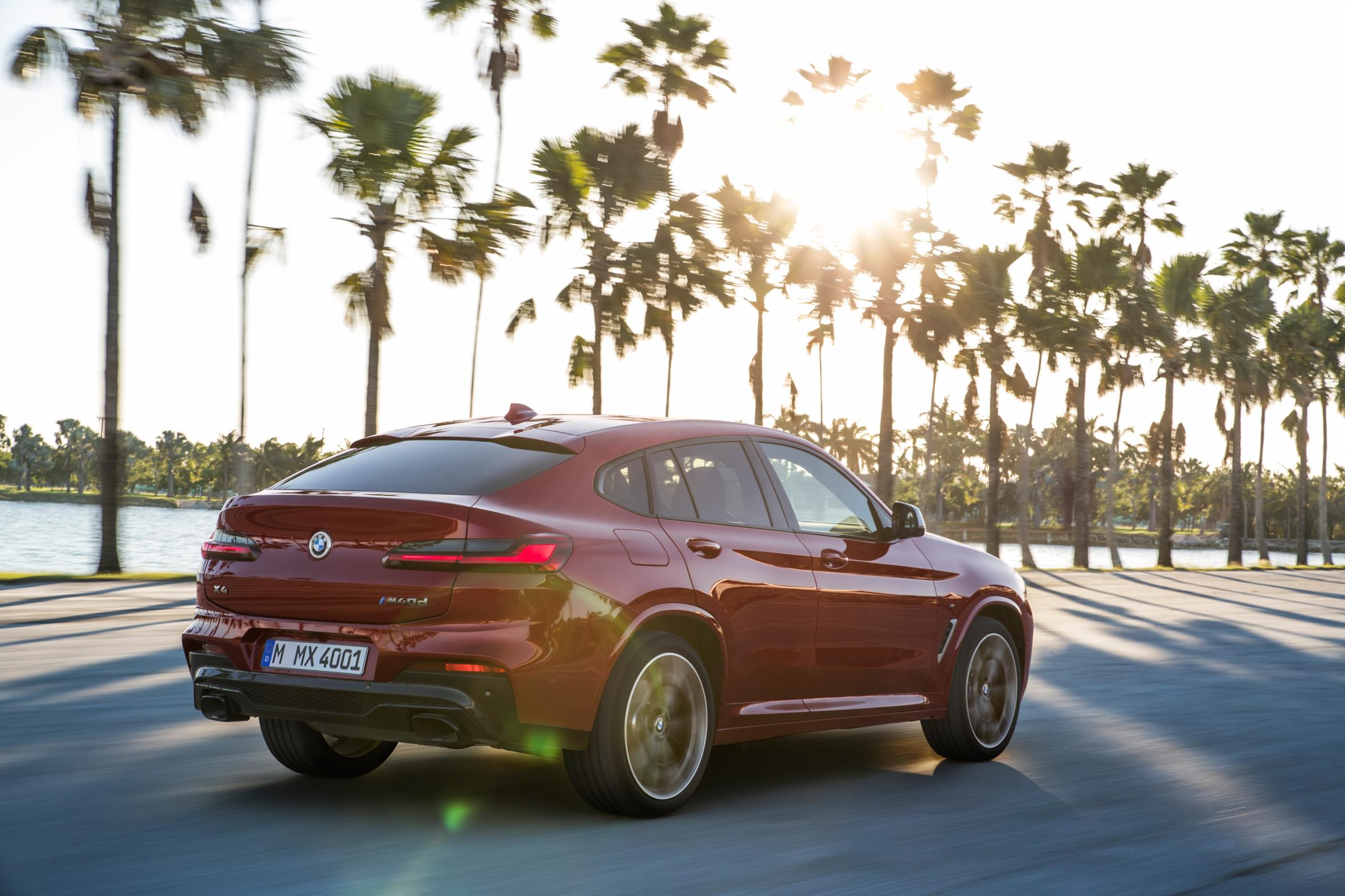
Fashion dictates your choice of alloy wheel diameters, which range between 18 and 20-inches, matched by increasingly wider and lower-profile tyres. If you desire a less sporty ride quality, then I would advise the smaller diameter options. However, the new double wishbone front suspension not only has the effect of improving steering control, to make the X4 even more surgically accurate to position through bends, but also improves the overall ride quality. Once again, it benefits from using significantly lighter materials, which means that the power steering is not compromised and the overall feel is enhanced.
While it is unlikely that an X4 driver will venture off-road too often, its 4WD system is certainly capable of providing the required levels of grip and benefits from both descent control and hill-start assist programs. A typical short frontal overhang means that approach angles are good, although the longer tail will demand care to avoid clashing with lumpier scenery.
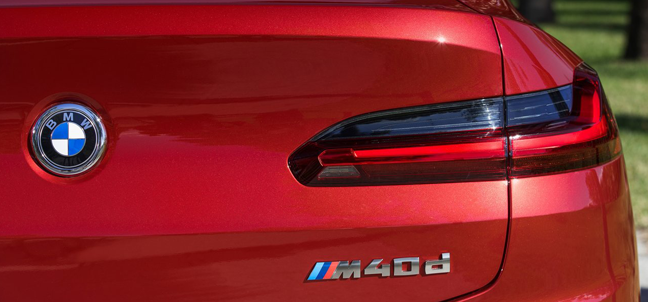
Living with a BMW X4 will be a pleasurable, driver-centred experience. Its solid build quality and superior on-road manners are key factors in selecting the Bavarian brand, which happens to be built alongside the X3 and the larger X5 models in Spartanburg, South Carolina, USA. The quality of cars from the US plant is a match for anything produced in Germany.